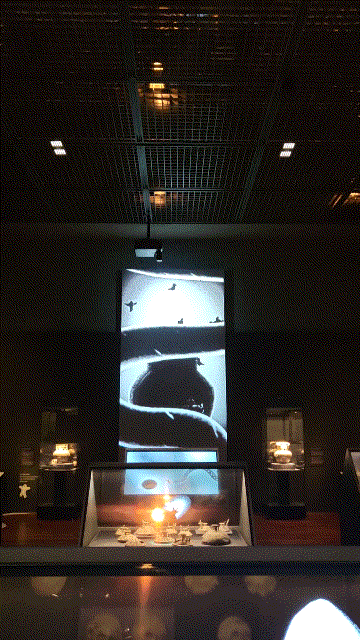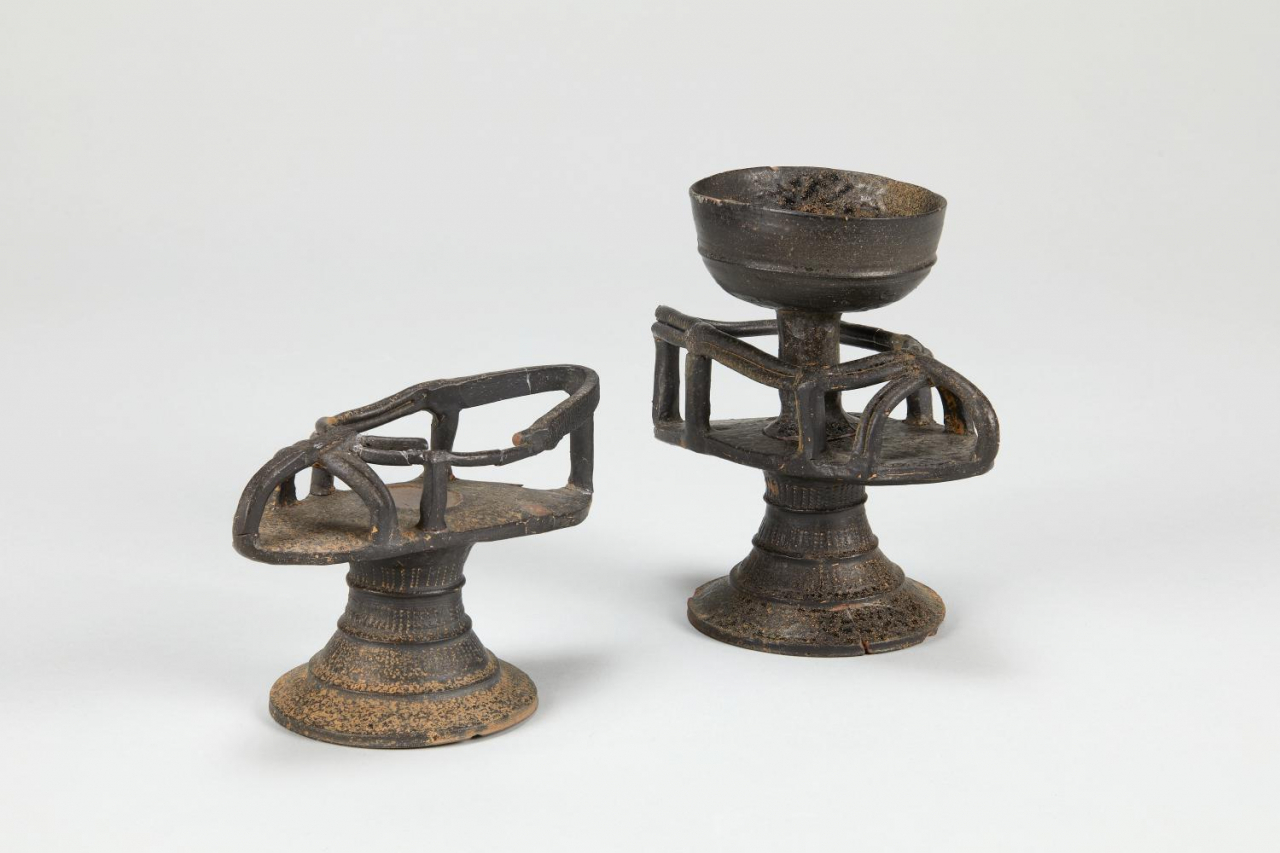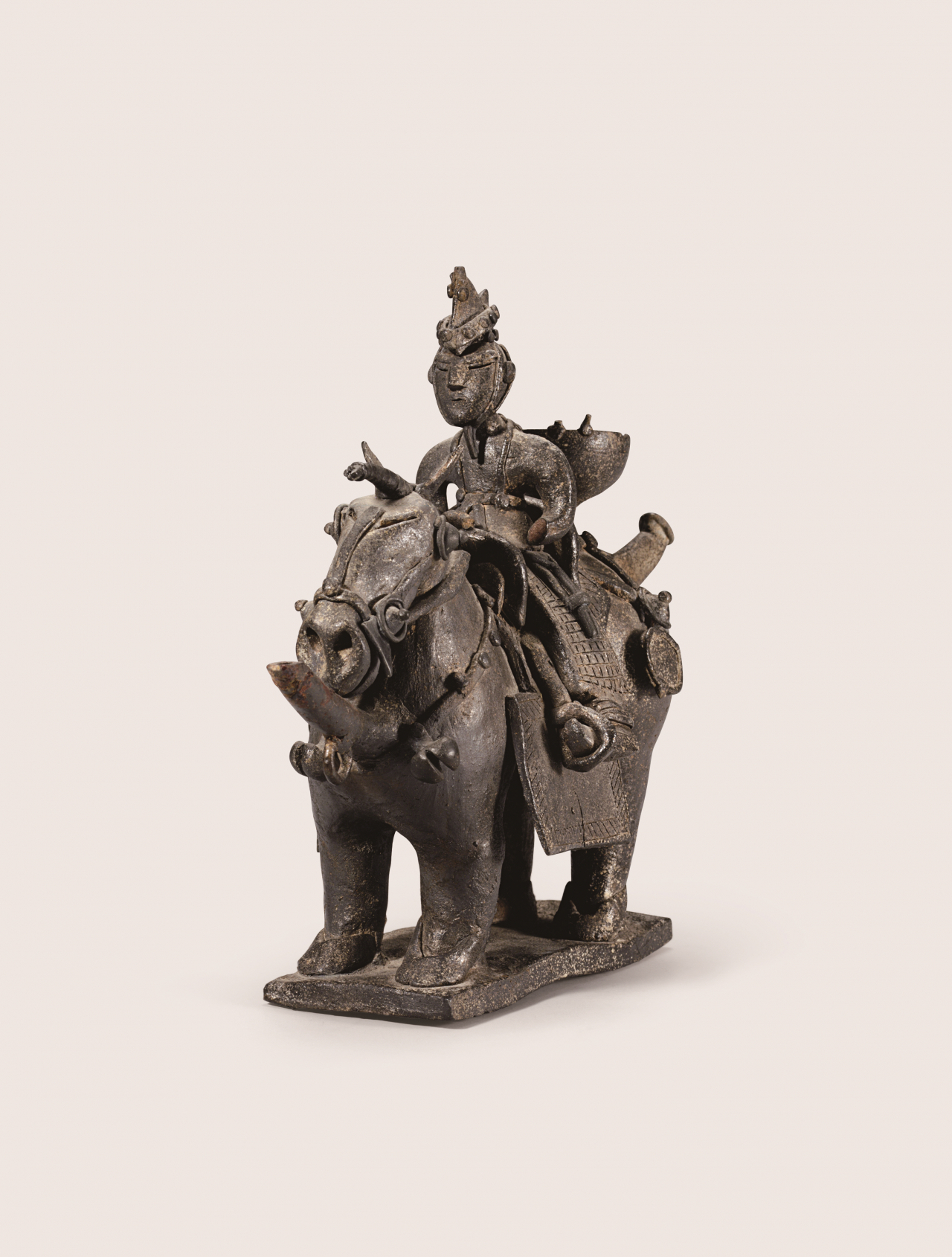 |
View of the National Museum of Korea's special exhibition, "Companions on the Eternal Journey" (Kim Hae-yeon/ The Korea Herald) |
An exhibition that explores how ancient Koreans contemplated death and the afterlife is underway at the National Museum of Korea's Special Exhibition Hall.
Entitled "Companions on the Eternal Journey," the exhibition features some 300 clay figurines and vessels discovered in tombs from the Three Kingdoms period.
Through the tranquil and serene atmosphere created by muted lighting, specially commissioned piano music and compelling storytelling, visitors are immersed in the experiences of Korea's ancestors and how they bid farewell to their loved ones. The narratives reveal that these final goodbyes often provided solace and relief for the bereaved.
The exhibition conveys the notion that the people of Silla and Gaya, who lived some 1,600 years ago, did not see death as an everlasting separation, but rather as a transition and a departure to a world beyond. This perspective influenced the cultural practice of burying people with various items, many of which have since been unearthed in tombs found in the Silla and Gaya regions.
Some 100 pieces of pottery featuring clay figurines discovered in Hwangnam-dong, Gyeongju, North Gyeongsang Province, are on display at the exhibition. The complete collection of pottery and figurines excavated from Malisan Tomb No. 45 in Haman, South Gyeongsang Province, are also included in the exhibition.
Clay figures in the form of birds, auspicious animals, horns, horses, boats, houses, lamps and other daily objects were regarded as special companions for the deceased on their journey to the afterlife.
For example, a pair of clay vessels in the shape of straw sandals, which dates back to the 5th century and was discovered at Tomb No. 53 in Bokcheon-dong, Busan, are the only extant footwear-shaped pottery today. These were likely used for offerings of alcoholic beverages and symbolize the hope for the departing soul's comfortable onward journey.
Another 5th century figure excavated in Hwangnam-dong, Gyeongju, portrays a poignant moment of death in exquisite detail. It features a woman gazing down at a cloth-covered corpse. While the exact relationship between the two remains unknown, it is not difficult to empathize with the complex emotions associated with bidding farewell to a loved one captured by the figure.
The exhibition's stories are further enhanced through a series of animated video projections that depict scenes of funerals and everyday life, as represented by the figures.
Admission costs 5,000 won per person and the exhibition runs through Oct. 9.
 |
"Companions on the Eternal Journey" (NMK) |
 |
Shoe-shaped vessels from Tomb No. 53 in Bokcheon-dong, Busan (NMK) |
 |
A clay vessel in the shape of a horse and a rider from the Geumnyeongchong Tomb in Gyeongju, North Gyeongsang Province (NMK) |
 |
"Companions on the Eternal Journey" (NMK) |





![[Weekender] Korea's traditional sauce culture gains global recognition](http://res.heraldm.com/phpwas/restmb_idxmake.php?idx=644&simg=/content/image/2024/11/21/20241121050153_0.jpg)

